If you’re a homeowner looking to tap into your property’s equity, you may have encountered two popular financing options: a Home Equity Line of Credit (HELOC) and a Home Equity Loan. Both allow you to borrow against the value of your home, but they work in very different ways. Understanding the key differences between these two options will help you decide which is the best fit for your financial situation.
What is a Home Equity Loan?
A Home Equity Loan is often referred to as a second mortgage. It’s a lump-sum loan that allows you to borrow a set amount of money based on the equity in your home. Just like your primary mortgage, you’ll be required to pay back the loan with fixed monthly payments, including both principal and interest, over a set period of time (usually 5 to 30 years). The interest rate is typically fixed, which means your payments will remain predictable over the life of the loan.
What is a HELOC?
A Home Equity Line of Credit (HELOC), on the other hand, is more like a credit card. It’s a revolving line of credit that allows you to borrow money against the equity in your home, up to a pre-approved limit. With a HELOC, you can borrow and repay funds repeatedly during the draw period, which typically lasts 5 to 10 years. You’ll only pay interest on the amount you borrow (not the entire credit limit), and during the draw period, you may only be required to make interest-only payments.
Once the draw period ends, the repayment period begins, which usually lasts 10 to 20 years. During this phase, you will be required to pay back both the principal and the interest, and your monthly payments will increase significantly.
Key Differences: HELOC vs Home Equity Loan
Now that you know the basics of each option, let’s explore the key differences between a HELOC and a Home Equity Loan.
| Feature | Home Equity Loan | HELOC |
|---|---|---|
| Loan Type | Lump-sum loan | Revolving line of credit |
| Loan Term | Fixed term (5 to 30 years) | Draw period (5 to 10 years) + repayment period |
| Interest Rate | Fixed interest rate | Variable interest rate (may change over time) |
| Repayment Structure | Fixed monthly payments (principal + interest) | Flexible payments (interest-only during draw period, then principal + interest) |
| Borrowing Flexibility | Borrow once, pay it back | Borrow, repay, and borrow again during draw period |
| Best For | Large one-time expenses or debt consolidation | Ongoing expenses, projects, or multiple withdrawals |
| Tax Deductibility | Interest may be tax-deductible if used for home improvement | Interest may be tax-deductible if used for home improvement |
| Approval Amount | Based on home equity and creditworthiness | Based on home equity, creditworthiness, and income |
Pros and Cons of a Home Equity Loan
Pros of a Home Equity Loan:
- Predictable Payments: With a fixed interest rate and fixed monthly payments, a Home Equity Loan offers predictability and consistency. You know exactly what your payments will be, which can help with budgeting.
- Large One-Time Expenses: This option is ideal for people who need a large sum of money for a specific, one-time expense, such as home renovations, debt consolidation, or paying off high-interest credit card debt.
- Fixed Interest Rate: You won’t have to worry about fluctuating interest rates during the life of the loan. This stability is particularly beneficial if you’re borrowing for the long term.
- Tax Deductible Interest: If you use the funds for home improvements, the interest on a Home Equity Loan may be tax-deductible, similar to a primary mortgage.
Cons of a Home Equity Loan:
- Lump Sum: You receive all of the funds upfront, which means you can’t borrow more later if you need additional money. If your situation changes and you require more funds, you’d need to apply for a new loan.
- Higher Monthly Payments: Because you’re repaying the loan in fixed installments, your monthly payments may be higher than with a HELOC, especially if you borrowed a large sum.
- Not as Flexible: Once you take out a Home Equity Loan, the funds are “locked in” to the loan. If you don’t use all of the money, you’ll still be responsible for paying it back with interest.
Pros and Cons of a HELOC
Pros of a HELOC:
- Flexibility: The biggest advantage of a HELOC is its flexibility. You can borrow money as needed during the draw period and pay it back without having to reapply for additional funds. This makes it a good option for ongoing or uncertain expenses, such as home repairs or medical bills.
- Lower Initial Payments: During the draw period, many HELOCs allow you to make interest-only payments, which can be much lower than the fixed payments of a Home Equity Loan. This gives you more flexibility in managing your monthly budget.
- Only Pay for What You Use: You only pay interest on the money you actually borrow, not the full credit limit. This can be more economical if you’re unsure how much you’ll need or if you plan to borrow in stages.
- Tax Deductibility: Just like a Home Equity Loan, the interest on a HELOC may be tax-deductible if the funds are used for home improvements.
Cons of a HELOC:
- Variable Interest Rate: Most HELOCs come with a variable interest rate, meaning the rate could increase over time. If interest rates rise, your payments could go up, making it harder to budget.
- Potential for Higher Payments: After the draw period ends, you will need to start repaying both principal and interest, which can result in higher monthly payments. Some homeowners are unprepared for this shift and can face financial strain when the repayment period begins.
- Risk of Debt Buildup: Because a HELOC functions like a credit card, it can be easy to borrow more than you can afford to pay back. Without discipline, the available credit can lead to accumulating debt.
Which One is Right for You?
Choosing between a HELOC and a Home Equity Loan depends on your specific financial needs and goals.
- Opt for a Home Equity Loan if:
- You need a large sum of money upfront for a one-time expense.
- You prefer predictable monthly payments with a fixed interest rate.
- You’re confident about your ability to pay off the loan within the term.
- Opt for a HELOC if:
- You need flexible, ongoing access to funds for projects or expenses.
- You don’t need the full loan amount immediately and may want to borrow more in the future.
- You’re comfortable with variable interest rates and the potential for payment fluctuations after the draw period.
Both options can help you leverage your home’s equity to finance major expenses, but it’s important to carefully assess your financial situation and future plans before making a decision.






